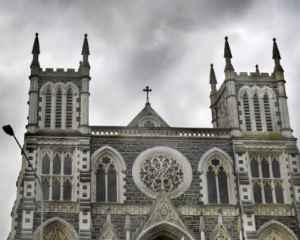
The quartet has performed with Stott many times and the empathy and musical affinity within this group of fine musicians was very evident.
The recital began with Gabriel Faure’s Nocturne No 6 in D flat Major Op 63 for pianoforte. In this popular work by the composer, the calm lyricism of the opening passage continued throughout, nearly always with right-hand prominence, through several key changes and many rippling and cascading textures.
Stott produced a true and sincere French Impressionist delivery, drawing incredible depth of tone and exquisite voicing from the Steinway.
Sonatine, by Maurice Ravel, was another pianoforte work from this period, with mesmerising melody which ebbed and flowed through a shroud of impressionistic harmonies. The final movement anime was busy and beautiful, with melodic fragments constantly surfacing.
Piano Quintet, by New Zealand composer John Psathas, premiered by the New Zealand String Quartet in 2000, was in a totally different mood. Fascinatingly contrapuntal composition of our times allowed all musicians to contribute with individual virtuosity, while maintaining a tight hold on the forward drive, syncopation and compactness of tone and timbre.
The challenge of controlling some very radical scoring, repetitive patterns and harmonics was triumphantly achieved. Definitely not a restful piece for laid-back easy listening.
French repertoire returned after the interval with Csar Franck’s three-movement Piano Quintet in F Minor (1879).
After a brief almost orchestral passage opened molto moderato quasi lento, the piano announced the first subject, initially with sonorous beauty, but the journey was to follow a route of countless moods — many modulations, tempestuous fiery chromaticism and extremes of dynamics.
These stark contrasts featured throughout the work and were magnificently interpreted.
The audience gave long applause for this outstanding recital.
- Elizabeth Bouman
Kathryn Stott and New Zealand String Quartet
• Glenroy Auditorium Friday, May 12











